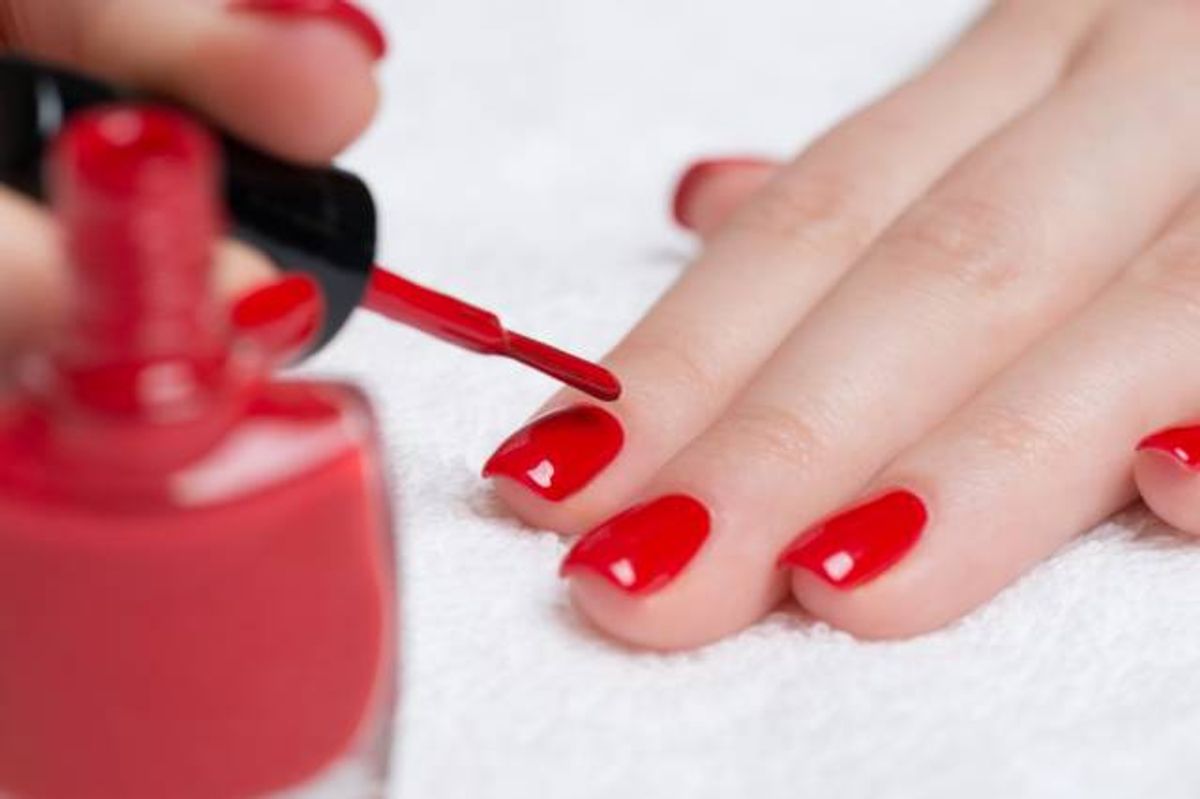There might soon be another tool on the market to prevent date rape -- but this time, instead of decorating one's keychain with a fancy little electronic device that detects the presence of "date rape drugs," interested buyers can decorate their nails and do exactly the same thing. Introducing: Undercover Colors, the first-ever nail polish that changes colors in the presence of compounds such as Rohypnol, Xanax and GHB, which are commonly used to facilitate sexual assaults.
The Undercover Colors founders -- four male undergraduate engineering students at North Carolina State University -- say they were inspired to come up with a product that would tackle a crucial social issue: sexual violence against women. The team notes on its Facebook page that approximately one in five women will experience sexual assault in her lifetime; the co-founders themselves ground the statistic in personal experience.
"All of us have been close to someone who has been through the terrible experience, and we began to focus on finding a way to help prevent the crime," co-founder Ankesh Madan said in a recent interview with Higher Education Works. "We wanted to focus on preventive solutions, especially those that could be integrated into products that women already use. And so the idea of creating a nail polish that detects date rape drugs was born."
Few technologies currently exist to detect common date rape drugs, which are typically colorless and odorless. The tools that do exist -- such as pd.id, the electronic drink scanner that was introduced last month -- have been criticized for continuing to place the onus of sexual assault prevention on potential victims, as opposed to calling out potential perpetrators. Specifically, these technologies fail to drive home the message that, although many rapes and sexual assaults can be prevented when victims avoid consuming date rape drugs, more sexual assaults could be avoided if people did not use date rape drugs in the first place -- or, better yet, if they didn't commit sexual assaults no matter the circumstances.
Undercover Colors seems to be taking this critical approach, while also attempting to offer practical assistance in the face of an ongoing problem. "Through this nail polish and similar technologies, we hope to make potential perpetrators afraid to spike a woman’s drink because there’s now a risk that they can get caught," the team explains. "In effect, we want to shift the fear from the victims to the perpetrators."
Still, there's room for skepticism about a rape prevention method that aims to deter assaults through more fear and stigma -- albeit stigma attached to committing sexual assault, not to surviving it -- instead of through education. And, beyond that, tools like Undercover Colors raise questions about the cost of profiting from rape prevention: Is this really a market we should continue to applaud entrepreneurs' (notably male ones) tapping into? Or might these resources be better allocated trying to teach people not to rape?



Shares